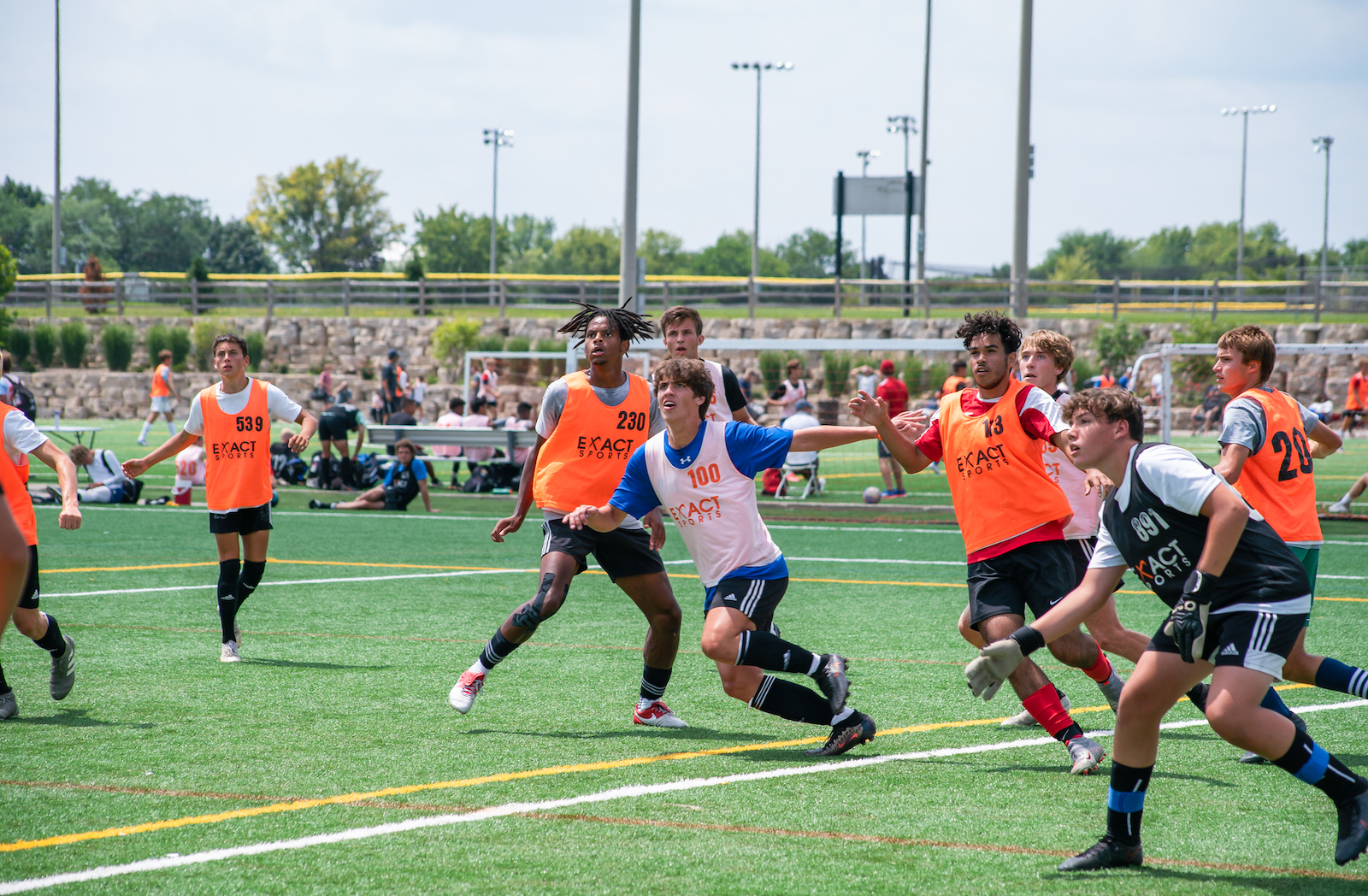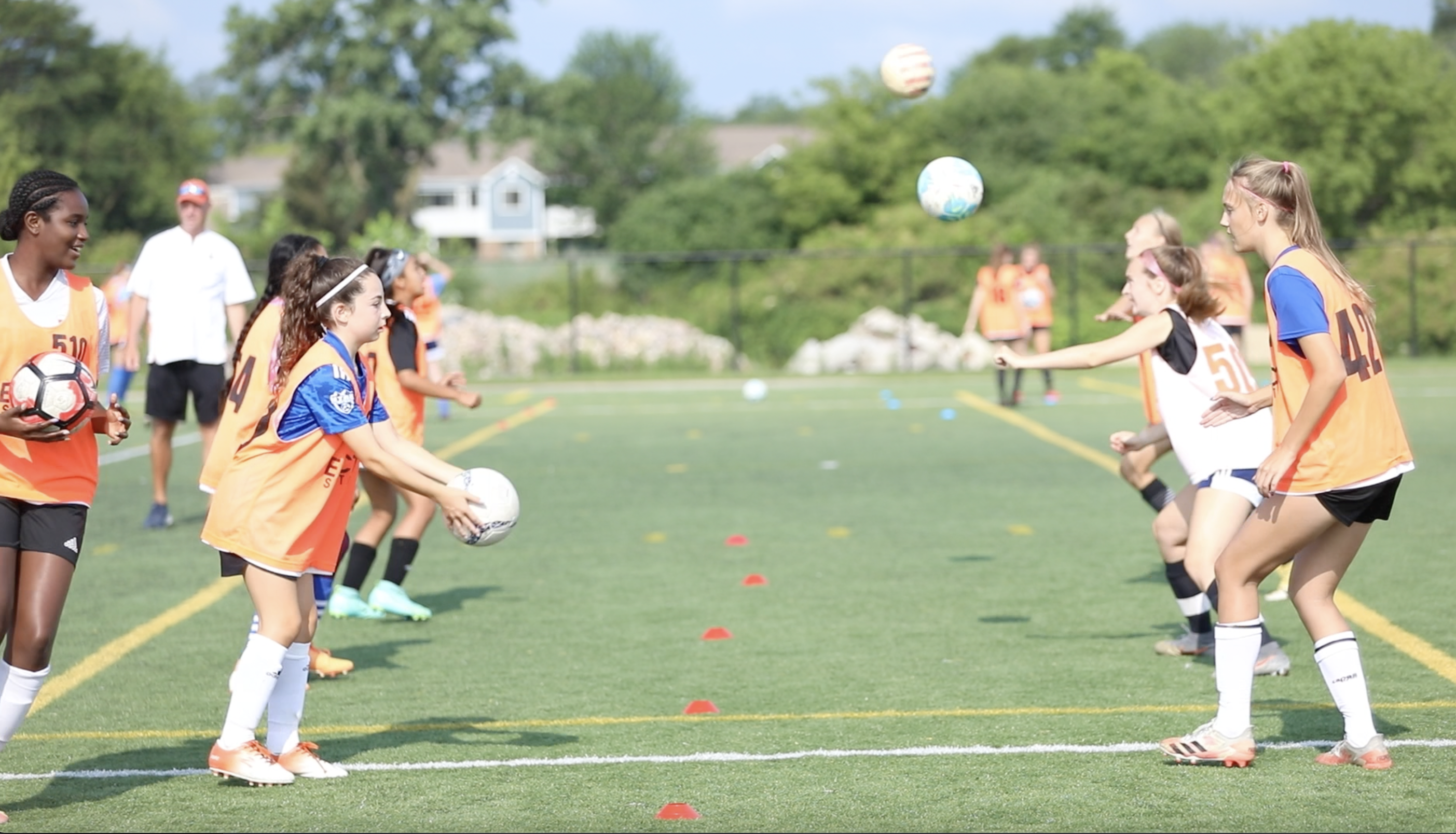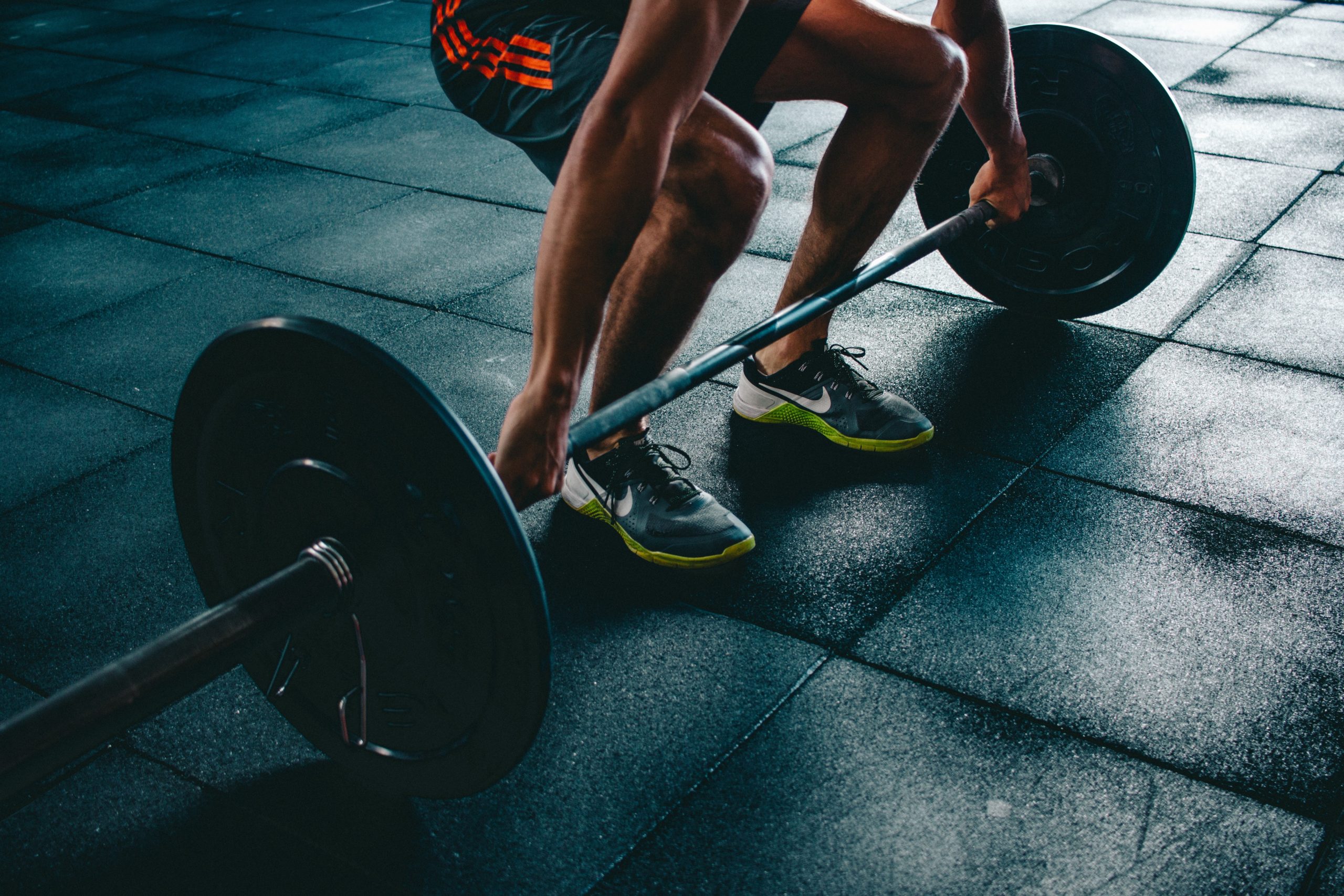Sam Morgan
EXACT Sports
February 1, 2023

Ultimate Guide to Improving Athletic Performance in Soccer
Achieving success as a college soccer player requires a combination of physical fitness, technical skill, and mental toughness. In this article, we will discuss strategies for improving your athletic performance and reaching your full potential as a college soccer player.
1. Training Routine
Develop a consistent training routine. To improve your fitness and skills, you need to train consistently. This means setting aside time daily to work on your physical fitness, technical skills, and tactical knowledge. Your training routine should include strength and conditioning exercises, ball-handling drills, and tactical practice.
2. Nutrition
Focus on your nutrition. Eating a healthy, balanced diet is essential for fueling your body and helping you recover from training and games. Make sure you are getting enough protein to support muscle growth and repair, and consume various fruits, vegetables, and whole grains to provide your body with the nutrients it needs to perform at its best.
3. Rest and Recovery
Get enough rest and recovery. Your body needs time to recover from the stresses of training and competition. Make sure you get enough sleep each night and take time to stretch and foam roll after training and games to help your muscles recover.
4. Mental Game
Develop your mental game. Soccer is a mental and physical sport, and you need to be mentally strong to perform at your best. This means learning to manage your emotions, focus on the task, and stay composed under pressure.
5. Guidance and Feedback
Seek guidance and feedback. As an aspiring college soccer player, it's essential to seek advice and input from coaches, trainers, and other experienced players. This will help you to identify areas for improvement and develop a plan to achieve your goals.

6. Visualization
Practice visualization. A visualization is a powerful tool for improving your performance on the field. By mentally rehearsing your movements and plays, you can train your mind to react more quickly and effectively in game situations. This can help you to improve your decision-making, ball control, and other vital skills.
7. Endurance
Build your endurance. Soccer is a physically demanding sport that requires a high level of cardiovascular fitness. To improve your endurance, include a variety of cardio exercises in your training routine, such as running, cycling, and swimming. Start with shorter, low-intensity workouts and gradually increase the duration and intensity of your training sessions as your fitness improves.
8. Strength Training
Focus on strength training. Strength training is essential for building the power and endurance you need to perform at your best on the field. Include exercises that work your legs, core, and upper body in your training routine. Use a combination of weightlifting, resistance band training, and bodyweight exercises to target different muscle groups and improve your overall strength.
9. Speed and Agility
Work on your speed and agility. Speed and agility are key components of soccer performance. To improve your speed and agility, include exercises such as sprints, agility drills, and plyometric exercises in your training routine. These exercises will help you to build the explosive power and quickness you need to outmaneuver your opponents on the field.
10. Positive Attitude
Keep a positive attitude. A positive attitude is essential for achieving success as a college soccer player. Believe in yourself and your abilities, stay motivated and focused, and don't let setbacks or losses get you down. Stay confident in your abilities, and keep working hard to achieve your goals.
In summary, there are many strategies you can use to improve your athletic performance as a college soccer player. By implementing the above mentioned strategies, you can achieve your full potential as a college soccer player and reach your goals.
Below, we dive into some specific physical areas: Building endurance for soccer, building strength for soccer, building speed & agility for soccer, and proper nutrition for soccer.
Building Endurance for Soccer
Here are a few examples of running workouts that you can use to build endurance as a college soccer player:
Long-distance runs: These runs should be at a steady, moderate pace and can be done on a track, treadmill, or the road. Start with shorter distances (e.g., 1-2 miles) and gradually increase the distance as your endurance improves.
Interval training: This type of training involves alternating between periods of high-intensity running and recovery periods. For example, you could run at a high intensity for 30 seconds, recover for 30 seconds, and repeat this pattern for several minutes.
Fartlek training: Fartlek training is a form of interval training that involves running at different speeds and intensities. For example, you could run at a moderate pace for a few minutes, then pick up the pace for a minute, and then slow down again. This type of training helps to improve your overall endurance and speed.
Hill sprints: Hill sprints are a great way to build leg strength and endurance. Find a hill that is challenging but not too steep, and sprint up the hill for 30 seconds to a minute. Walk or jog down to recover, and repeat for several sets.
Tempo runs: Tempo runs involve running at a slightly faster pace than your normal training pace. This helps to improve your overall running speed and endurance.
Remember that you should always warm up before doing any running workout and cool down after it, and also, it is essential to listen to your body and not push yourself too hard too quickly. It's also advisable to consult with a coach or trainer to design a running program that is tailored to your individual fitness level and goals.

Building Strength for Soccer
Here are a few examples of strength-training workouts that you can do to improve your strength as a college soccer player:
Weightlifting: Weightlifting exercises such as squats, deadlifts, bench presses, and rows are great for building overall strength. Start with a light weight and gradually increase the weight as you become stronger.
Resistance band training: Resistance bands are a great way to add resistance to your strength training without using weights. Exercises such as banded squats, banded rows, and banded pull-downs are great for building strength in the legs, back, and shoulders.
Bodyweight exercises: Bodyweight exercises such as push-ups, pull-ups, and dips are great for building strength. You can also use bodyweight exercises to work on specific areas such as the legs, core, and upper body.
Plyometric exercises: Plyometric exercises such as jump squats, box jumps, and burpees are great for building explosive power and leg strength. These exercises help to improve your agility and jumping ability.
Core exercises: Core exercises such as planks, Russian twists, and leg raises are great for building strength in the abdominal and lower back muscles. A strong core is essential for maintaining good posture and balance on the field.
It's important to note that you should always warm up before doing any strength training workout and cool down after it, and also, it is essential to listen to your body and not push yourself too hard too quickly. It's also advisable to consult with a coach or trainer to design a strength training program that is tailored to your individual fitness level and goals.

Building Speed & Agility for Soccer
Here are a few examples of drills that you can do to improve your speed and agility as a college soccer player:
Sprint drills: Sprint drills such as running suicides, shuttle runs, and ladder drills are great for building speed and quickness. These drills involve running short distances at maximum effort, with quick turns and direction changes.
Agility drills: Agility drills such as cone drills, ladder drills, and shuttle runs are great for building quickness and agility. These drills involve running through a series of cones or navigating an obstacle course while changing direction quickly.
plyometric exercises: Plyometric exercises such as jump squats, box jumps, and burpees are great for building explosive power and leg strength. These exercises help to improve your agility and jumping ability.
Ladder drills: Ladder drills are great for improving footwork, agility, and coordination. These drills involve running in and out of the ladder while keeping your feet moving quickly.
Partner drills: Partner drills such as mirroring and passing drills are great for improving reaction time and agility. These drills involve working with a partner to move quickly and respond to their movements.
Ball handling drills: Ball handling drills such as dribbling around cones or working with a partner to pass and control the ball quickly can help to improve your footwork, control, and reaction time.
It's important to note that all these drills should be performed with maximum effort and with proper technique, and also, it is essential to listen to your body and not push yourself too hard too quickly. It's also advisable to consult with a coach or trainer to design a training program that is tailored to your individual fitness level and goals.

Proper Nutrition for Soccer
Proper nutrition is an essential aspect of achieving success as a college soccer player. Here's an overview of some fundamental principles to follow for optimal athletic performance:
Adequate calorie intake: Soccer players require more energy than sedentary individuals to support their training and competition demands. Be sure to consume enough calories to meet your energy needs.
Adequate protein intake: Protein is essential for building and repairing muscle tissue. Soccer players should aim for 1.2-1.7 grams of protein per kilogram of body weight per day. Good protein sources include lean meats, fish, poultry, eggs, dairy products, and plant-based options such as beans, lentils, and quinoa.
Adequate carbohydrate intake: Carbohydrates are the primary fuel source for high-intensity exercise. Soccer players should aim for 4-7 grams of carbohydrates per kilogram of body weight per day. Good sources of carbohydrates include fruits, vegetables, whole grains, and starchy vegetables such as potatoes and sweet potatoes.
Adequate hydration: Adequate hydration is essential for maintaining physical performance and preventing dehydration. Soccer players should aim to drink at least 16-20 ounces of water 2-3 hours before exercise and 7-10 ounces of water every 10-20 minutes during exercise.
Adequate fat intake: Fats are an essential source of energy and help to support overall health. Soccer players should aim for 20-30% of their daily caloric intake from healthy fats such as olive oil, avocado, nuts, and seeds.
Proper timing of nutrient intake: The timing of nutrient intake is also crucial for optimal athletic performance. Soccer players should aim to consume a meal containing carbohydrates and protein within two hours after training or competition to help promote recovery.
It's important to note that this is a general guideline. Depending on your body composition, goals, and training schedule, you may need more or less of certain macronutrients, so it's always recommended to consult a sports dietitian to create a personalized nutrition plan.
